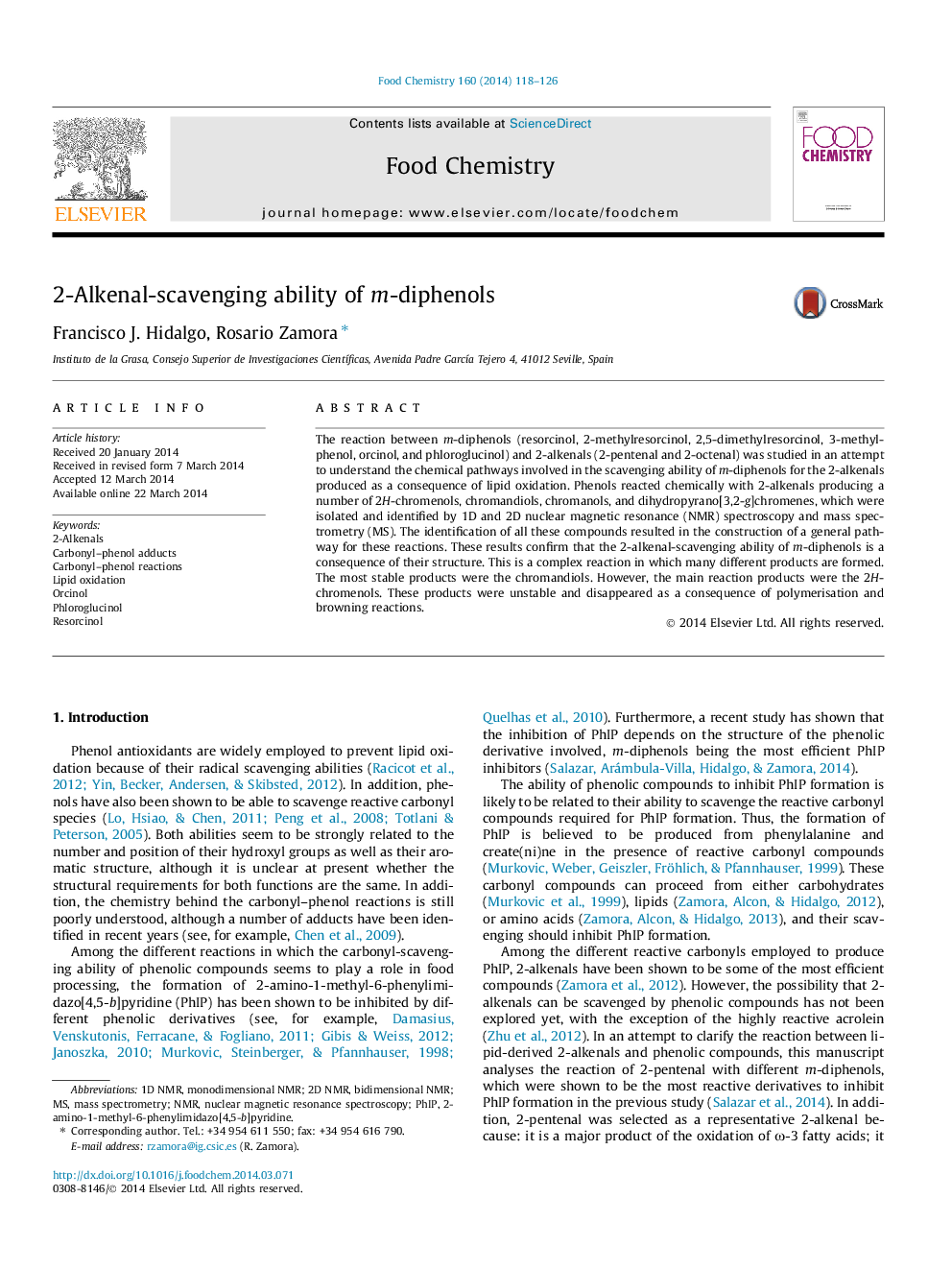| Article ID | Journal | Published Year | Pages | File Type |
|---|---|---|---|---|
| 7597104 | Food Chemistry | 2014 | 9 Pages |
Abstract
The reaction between m-diphenols (resorcinol, 2-methylresorcinol, 2,5-dimethylresorcinol, 3-methylphenol, orcinol, and phloroglucinol) and 2-alkenals (2-pentenal and 2-octenal) was studied in an attempt to understand the chemical pathways involved in the scavenging ability of m-diphenols for the 2-alkenals produced as a consequence of lipid oxidation. Phenols reacted chemically with 2-alkenals producing a number of 2H-chromenols, chromandiols, chromanols, and dihydropyrano[3,2-g]chromenes, which were isolated and identified by 1D and 2D nuclear magnetic resonance (NMR) spectroscopy and mass spectrometry (MS). The identification of all these compounds resulted in the construction of a general pathway for these reactions. These results confirm that the 2-alkenal-scavenging ability of m-diphenols is a consequence of their structure. This is a complex reaction in which many different products are formed. The most stable products were the chromandiols. However, the main reaction products were the 2H-chromenols. These products were unstable and disappeared as a consequence of polymerisation and browning reactions.
Keywords
Related Topics
Physical Sciences and Engineering
Chemistry
Analytical Chemistry
Authors
Francisco J. Hidalgo, Rosario Zamora,
